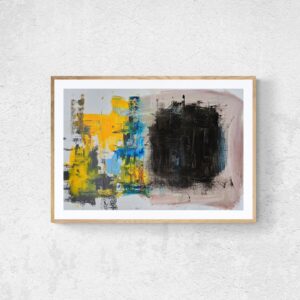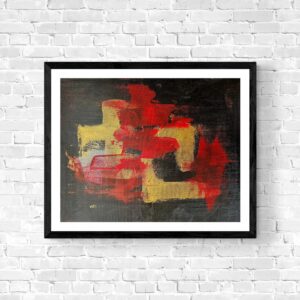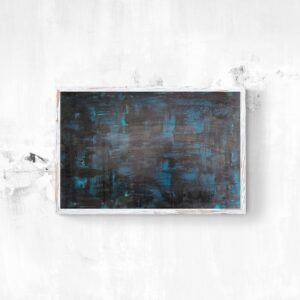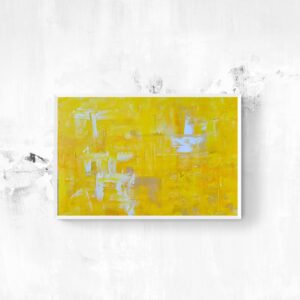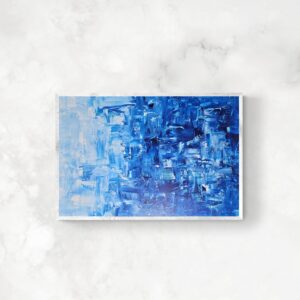
It was immediately apparent when I walked into Gray Gallery’s spacious, living room-like uptown space that the dimensions of the four paintings in Judy Ledgerwood’s exhibition were determined by those of the walls on which they hung. A single work occupied two of the walls, while two equally sized canvases held a dialogue on the third.
Ledgerwood’s manipulation of formal structure within individual works accelerated my appreciation of her play with dimensions, from the skewed linear grid of unequal triangles occupied by a hand-drawn trefoil in “Vitamin C” (all works 2025) to the vibrant opticality of different trefoils, some of them mirrored, dispersed across a monochromatic ground in “Crepuscolo.” Hung on opposite walls, this pairing made me look more closely at how each of the four paintings talked to each other as well as held their own ground.

I have always thought of Ledgerwood as a consummate painter who transformed the rigidity of Pattern and Decoration’s reliance on repetition into a mode of improvisation and surprise. The eye-opener was the manner in which she undid the movement’s decorous decorum into something fanciful, forthright, and frankly vulgar. This goes back to Willem de Kooning’s ostentatious nudes and their trace of misogyny, which Ledgerwood also upends. The quatrefoils and trefoils we see in her paintings are comical evocations of female genitalia, a bad boy’s graffiti on a bathroom wall. I once compared them to “Henri Matisse’s cut-outs […] romanced by anthropomorphic cartoon mice.” And yet, what we see is not vulgarity, but the frank celebration of female sexuality. I am reminded of something the painter David Reed once said to his dealer, Nicholas Wilder: “My ambition in life is to be a bedroom painter.”
“Crepusculo” is a pulsating field of mauve quatrefoils and distorted variations on an orange field. Ledgerwood has painted an orange rectangle whose top and bottom edge sags in the middle against the strict edges of her stretched canvas. With rivulets of orange and mauve dripping along the bottom edge, the irregular rectangle becomes a cloth, like the cerulean blue and yellow one we see draped over a turquoise screen in Henri Matisse’s “The Pink Studio” (1911). The difference is that Ledgerwood’s cloth is made of paint, drips and all. I think the artist wanted to extricate this piece of decorative fabric from the harem, a space both private and public, to the intimate space of the bedroom. Seeing is private.

While disegno (drawing), embodied by “Vitamin C,” and colore (color), embodied by “Crepuscolo,” were considered rival aesthetic approaches in Renaissance Italy, Ledgerwood complicates the matter with the pairing of the identically sized rectangles “Alpen Glow” and “Golden Hour” on the same wall. Made of a crazy quilt of mostly triangles in colors such as pale pink, blue, violet, and orange, as well as solid lines and stained areas, “Golden Hour” transports different strains of American painting, such as Minimalism’s grid, stain painting, and Pattern and Decoration, into a feminist worldview without becoming didactic. Some triangles are aligned so that they flip between flat shapes and two sides of a pyramid — that is, two-dimensionality and three-dimensionality. Lines of her trefoils meet across triangles and become quatrefoils, proving that odd numbers can fit into even ones. Some trefoils resemble graffiti penises and balls, while others look like the monochromatic silhouette of a cartoon rodent. Antic humor, joyful irreverence, aesthetic disquisition, and art history embrace each other.
Ledgerwood draws many of the trefoils in a line of thick paint, as in the saturated colors of “Alpen Glow.” Some drip. In the open space where two meet, we see a thick twist of paint whose evocative ambiguity brought to mind lines from Gertrude Stein’s erotic masterpiece, Tender Buttons (1914): “Light blue and the same red with purple makes a change. It shows that there is no mistake. Any pink shows that and very likely it is reasonable.” Working within a limited vocabulary, Ledgerwood keeps finding ways to open up new doors to visually sensuous pleasures.

Judy Ledgerwood: Twilight in the Wilderness continues at Gray New York (1018 Madison Avenue, Floor 2, Upper East Side, Manhattan) through November 1. The exhibition was organized by the gallery.

